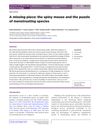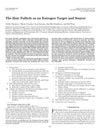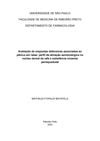The Effects of Sex Steroids and Menstrual Cycle/Oestrous Phases on Knee Ligament Laxity in Humans and Rodents
January 2014
TLDR Knee laxity varies with menstrual cycle phases, being highest during ovulation and menstruation, and is influenced by sex-steroids.
The study by Firouzeh Dehghan investigated the effects of sex-steroids and menstrual cycle phases on knee ligament laxity in both humans and rodents. It found that knee range of motion (ROM) increased in rats treated with oestrogen and progesterone, but decreased with testosterone. This change was linked to the expression of relaxin receptors RXFP1 and RXFP2, which were up-regulated by oestrogen and progesterone and down-regulated by testosterone. In humans, knee laxity varied across the menstrual cycle, peaking during ovulatory and menstrual phases, with non-athletes showing greater laxity than athletes. The study highlighted a correlation between knee laxity and serum relaxin levels, providing insight into why females may be more susceptible to non-traumatic knee injuries during certain reproductive phases.




